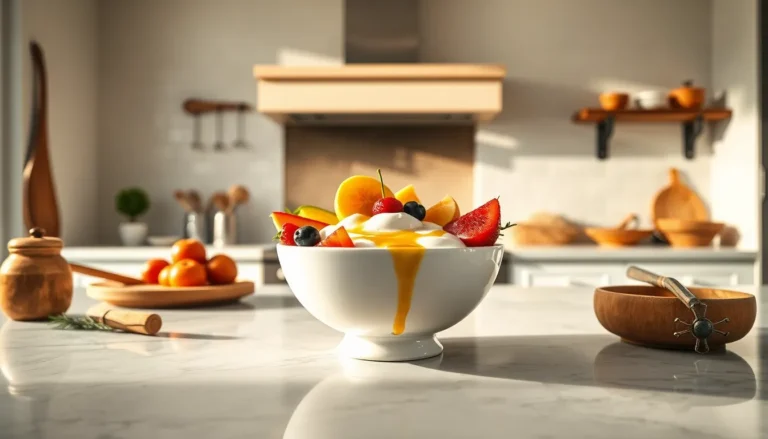Navigating life with a wheelchair shouldn’t feel like a game of obstacle course. With the right wheelchair ramp ideas, accessibility can be both practical and stylish. Forget the bland, industrial look; ramps can be as fabulous as they are functional.
Imagine transforming that steep porch into an inviting entryway that’s the envy of the neighborhood. From creative DIY solutions to sleek, ready-made options, there’s a ramp out there just waiting to roll into action. So whether it’s for a cozy home or a bustling business, let’s dive into some innovative ramp designs that prove accessibility doesn’t have to compromise on style or flair. After all, who said ramps can’t be the new black?
Table of Contents
ToggleCreative Wheelchair Ramp Ideas
Wheelchair ramps can be both stylish and functional. A variety of designs enhance accessibility while also complementing the aesthetics of a home or business.
Portable Wheelchair Ramps
Portable wheelchair ramps provide flexibility and ease of use. Ideal for temporary situations, these ramps can be relocated as needed. Options include lightweight aluminum models, which are easy to transport, and folding ramps that fit into vehicle trunks. Many designs feature textured surfaces, ensuring safety during use. Some portable ramps accommodate various heights, making them suitable for different locations. Users benefit from quick setups, whether at home, work, or travel destinations.
Modular Wheelchair Ramps
Modular wheelchair ramps offer customizable solutions for accessibility. These ramps consist of interlocking sections, allowing adjustments to fit specific height and space requirements. Users can create a ramp that matches their home or business style, as many materials and finishes are available. Builders can easily expand or reconfigure these ramps if needs change. Sturdy design ensures long-lasting durability, enhancing user safety. By focusing on required height and footprint, effortless installation becomes possible for any environment.
Materials for Wheelchair Ramps
Choosing the right materials for wheelchair ramps influences both functionality and aesthetics. The following sections explore key material options, focusing on wood, metal, and eco-friendly choices.
Wood vs. Metal Ramps
Wooden ramps offer warmth and visual appeal. They blend well with natural surroundings, creating an inviting entryway. However, maintenance is crucial; wood may require regular sealing and painting to resist weathering. Metal ramps, on the other hand, provide unmatched durability. Materials like aluminum resist corrosion and require minimal upkeep. They often come in slip-resistant designs, enhancing safety during use. Each option serves specific needs, depending on individual preferences and environmental factors.
Eco-Friendly Options
Eco-friendly ramps use sustainable materials, appealing to environmentally conscious users. Bamboo provides strength similar to traditional wood, while being renewable. Recycled plastic also offers durability without compromising aesthetics. Additionally, these materials resist rot and insects, ensuring longevity. Choosing eco-friendly options reduces environmental impact and supports sustainable building practices. They can integrate seamlessly into various designs, proving that accessibility can harmonize with nature.
Designing Your Wheelchair Ramp
Designing a wheelchair ramp involves multiple considerations that balance accessibility with aesthetics. Thoughtful planning ensures functional use and stylish appeal.
Accessibility Considerations
Safety remains paramount in ramp design. The slope should maintain a 1:12 ratio, meaning every inch of vertical rise requires 12 inches of ramp length. This ratio provides manageable incline angles for users. Handrails on both sides increase support and stability. Additionally, width should accommodate all mobility devices, ideally at least 36 inches. Non-slip surfaces prevent accidents, ensuring users feel secure. Proper maintenance keeps ramps functional and safe for use in various weather conditions. Incorporating signage helps inform visitors about the ramp’s importance, enhancing overall accessibility awareness.
Aesthetic Integration
A wheelchair ramp can complement a home’s design when designed thoughtfully. Material choices play a crucial role; wood offers a natural look, while metal provides modern appeal. Color enhances visual integration, aligning with existing palettes. Smooth finishes allow for a sleek appearance, while decorative elements can personalize designs. Landscaping around the ramp softens the overall look, blending functionality and beauty. Lighting along the ramp not only improves visibility at night but also adds an elegant touch. Ultimately, achieving harmony between style and utility enhances the space while keeping accessibility in focus.
Installation Tips for Wheelchair Ramps
Proper installation of wheelchair ramps ensures safety and functionality. Consider the following tips when deciding on installation approaches.
DIY Installation
DIY installation offers an affordable option for those with handy skills. Gather essential materials like treated wood or metal, screws, and non-slip coatings. Follow a clear plan by measuring the height from the ground to the entry point, then calculating the slope ratio. Achieving a 1:12 slope ensures optimal accessibility. Use sturdy support beams for stability, and secure handrails for added safety. Finishing touches, such as weatherproofing treatments, enhance durability. Embracing creativity in design can make the ramp visually appealing without sacrificing function.
Hiring Professionals
Hiring professionals guarantees expert installation and compliance with accessibility standards. Seek contractors specializing in ramps to ensure precision and safety. Professionals assess site conditions, provide tailored solutions, and often suggest design enhancements. Verify they understand local regulations regarding slope ratios and material use. An experienced installer guarantees proper measurements and structural integrity. Consider requesting examples of past work to evaluate their design versatility. Ultimately, investing in professional installation can provide peace of mind, resulting in a well-designed and safe ramp.
Conclusion
Wheelchair ramps don’t just serve a practical purpose; they can also enhance the beauty of a space. By exploring various designs and materials, individuals can create ramps that reflect personal style while ensuring safety and accessibility. Whether opting for a portable solution or a permanent installation, the right ramp can transform an entryway into an inviting and functional area.
Thoughtful design considerations play a crucial role in achieving harmony between aesthetics and utility. With the right approach, anyone can make a statement with their wheelchair ramp while promoting inclusivity. Embracing creativity in ramp design opens doors to a world where accessibility and style coexist seamlessly.


